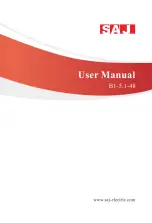
250 ©
Copyright 2017 QSAN Technology, Inc. All Right Reserved.
1.
If there are two or more snapshots existed, the system will try to remove the oldest
snapshots (to release more space for the latest snapshot) until enough space is
released.
2.
If there is only one snapshot existed, the snapshot will fail. Because the snapshot space
is run out.
For example, there are two or more snapshots existed on a volume and the latest snapshot
keeps growing. When it comes to the moment that the snapshot space is run out, the
system will try to remove the oldest snapshot to release more space for the latest snapshot
usage. As the latest snapshot is growing, the system keeps removing the old snapshots.
When it comes that the latest snapshot is the only one in system, there is no more snapshot
space which can be released for incoming changes, then snapshot will fail.
Maximum Snapshot Quantity per Volume
There are up to 64 snapshots can be created per volume. What if the 65th snapshot has
been taken? There are two different situations:
1.
If the snapshot is configured as schedule snapshot, the latest one (the 65th snapshot)
will replace the oldest one (the first snapshot) and so on.
2.
If the snapshot is taken manually, when taking the 65th snapshot will fail and a warning
message will be showed on web user interface.
Rollback and Delete Snapshot
When a snapshot has been rolled-back, the related snapshots which are earlier than it will
also be removed. But the rest snapshots will be kept after rollback. If a snapshot has been
deleted, the other snapshots which are earlier than it will also be deleted. The space
occupied by these snapshots will be released after deleting.
12.2.
Managing Local Clones
Local clone is used to make a duplicate copy of a volume in the same storage pool as well
as in a separate storage pool within the same enclosure. In setting up local clone task, the
first clone is a full copy. From now on, the cloning is a differential copy, created using
snapshot functionality. Manual and scheduled tasks are available for management flexibility.
In the event that the source volume is broken and it fails, IT managers can quickly switch to
the cloned volume and resume data services.
Summary of Contents for XCubeSAN XS5224D
Page 71: ...SANOS User Interface 49 nnnnn RPM Power Supply Local PSU n status Reset to Default Yes No...
Page 99: ...System Settings 77 Figure 6 14 System Information...
Page 315: ...Monitoring 293 Figure 13 5 Hardware Monitoring...
Page 327: ...Support and Other Resources 305 Figure 15 1 Download Service Package in the SANOS UI...
Page 331: ...Support and Other Resources 309...
















































